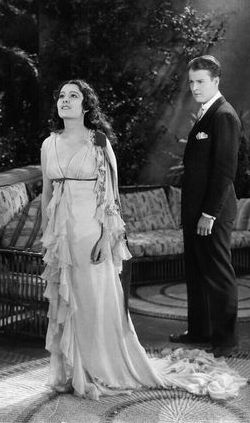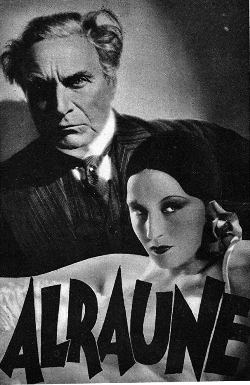The Ghost Train (1931) 
Trenul fantomă (1933) 
Kisértetek vonata (1933) 
De Spooktrein (1939) 
The Ghost Train (1941) 
A Joker pulls the emergency cord to stop the train in order to retrieve his hat that had flown out a window. This causes the train to arrive at the station late, and with no other trains coming until morning, stranding a group of passengers. Besides the Joker, the group include a newly Married Couple, a Cute Girl traveling with an Earnest Man, a teetotaling, Prissy Lady with a parrot, and a Doctor. They are warned by the Station Master that the station is haunted and that a ghost train comes by at night, and if they want to survive, they need to leave. They refuse, and the Station Master abandons them in fear of the ghosts. What follows is a string of spooky events, including a death and then the disappearance of the corpse, strange sounds and lights, the arrival of a crazed woman, and the passage of the ghost train itself.
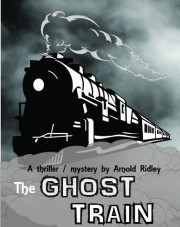
The Ghost Train was a very popular British play. Written by Arnold Ridley in 1923, it had a successful run and has seen numerous revivals. It was adapted for the screen in 1927 in a British-German co-production, and like so many other Dark House movies, it was remade once sound was in place just a few years later, in 1931, this time just by the British. Next, in 1933, came two from the European continent, the Romanian Trenul fantomă and Hungarian Kisértetek vonata. The French Un Train Dans La Nuit was released in 1934, but that one will get no more discussion here as no prints are known to survive. In 1939 the Dutch joined in with De Spooktrein. And finally the Brits took it back in 1941. There have been four more official versions since then, and a number more that “borrowed” from it, but I’ll stick with the years from ’31 to ‘41.
It’s surprising how much alike the five surviving films are. The basic plot is exactly the same, with all the same major events occurring in the same order, and with few changes to even the minor ones. While the character names change (I’ll use descriptive names for each), their personalities shift only a bit. Footage is even shared between three of them, and the 1941 version had the same director as the 1931, so perhaps it isn’t that surprising.
The Ghost Train is an Old Dark House story transplanted to a railway station. The characters are properly quirky, there’s a dead body and strange lights and talk of ghosts, plenty of comic relief, and an eerie atmosphere. The story line is entertaining enough, and certainly has been popular. The characters are not complex or deeply developed, but rather were intended to represent a cross section of British society in the 1920s, thus supplying a bit of commentary while also being easy to identify. Everything is here for a thoroughly entertaining film. However, a few flaws are inherent to the structure that have been magnified in different productions. The story is good, but it’s brief, at least as executed in all five films (I’ve never seen the play and am curious how it fills nearly two hours). There’s approximately an hour’s worth of material. When an adaptation gets much over that, it drags. As the story was written for the stage, there’s a tendency to replicate that a bit too closely. I’m not a fan of opening up a film for no purpose when made into a movie, but most of these renditions could be converted back into a stage play without making any changes. A few more locations or some clever manipulation of the camera to better tell the tale would be nice. But inventive cinematography is not in abundance. Also, the Joker is supposed to be annoying to the other passengers, but he can easily become annoying to the audience. And if the film features him as the lead instead of part of the ensemble, as several do, he can become downright unpleasant.
How do the individual adaptations fare?
I have to be restrained when judging Walter Forde’s first attempt at the material in ’31 as I exaggerated when I wrote that there are five surviving films. Call it four and three quarters. For a while this was a lost film, but parts have been rediscovered. Of the seven reels, 2, 3, 4, 5, and 7 are available. However, only 4 and 7 have sound. That creates an awkward viewing experience for the uninitiated. To make it a bit more confusing, I’ve only been able to find video of it with the reels ordered 2, 3, 5, 4, 7. I assume this was so that the two sound reels would be together. I wouldn’t suggest sitting down to watch this with no prior knowledge of the story. However, I’ve seen four other versions in a week, so it was clear for me. Based on what remains, the ’31 version seems not to deviate at all from the norm, with every character and ever plot point being exactly as I expected.
That means it drags a bit and the Joker is annoying; he’s more than commonly so (the British films have the biggest problem with him). The cinematography is good for its time, with particularly fine use of lighting, but this is 1931 and it looks like it. The acting seems solid, but no one has that extra shot of charisma that the story needs. I’d guess that this would have been one of the weaker versions, but until someone comes up with a pile of sound disks (yes, the sound was recorded on disk), and a few film reels, guessing is all I can do.
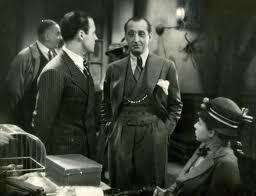 Trenul fantomă and Kisértetek vonata can be reviewed together. Just as Hollywood used to film the same feature in multiple languages for release in different countries (for example, Dracula and Drácula from 1931), these were shot together, one for Romania and one for Hungry. They use the same sets, have the same style and pacing, and both use the same exterior shots, taken from the 1931 British version. However, they had different cast and crew, and of course, different languages. Both are short, one at 64 minutes and the other at 71. I can’t find reliable information on the original lengths of either film, but neither seem to be cut. The major difference between them is that while both add a song performed by the Joker and Cute Girl to entertain the others, Trenul fantomă adds another early in film that feels out of place and stops the film dead. Outside of that, these are well paced compared to the ’31 version. They also tone down the Joker, making him only a little irritating. Since he and the Cute Girl are clearly the stars, the others get short shrift. This is partly mitigated for The Couple, who are made more affectionate, thus giving them something to do, which is kissing and fawning over each other.
Trenul fantomă and Kisértetek vonata can be reviewed together. Just as Hollywood used to film the same feature in multiple languages for release in different countries (for example, Dracula and Drácula from 1931), these were shot together, one for Romania and one for Hungry. They use the same sets, have the same style and pacing, and both use the same exterior shots, taken from the 1931 British version. However, they had different cast and crew, and of course, different languages. Both are short, one at 64 minutes and the other at 71. I can’t find reliable information on the original lengths of either film, but neither seem to be cut. The major difference between them is that while both add a song performed by the Joker and Cute Girl to entertain the others, Trenul fantomă adds another early in film that feels out of place and stops the film dead. Outside of that, these are well paced compared to the ’31 version. They also tone down the Joker, making him only a little irritating. Since he and the Cute Girl are clearly the stars, the others get short shrift. This is partly mitigated for The Couple, who are made more affectionate, thus giving them something to do, which is kissing and fawning over each other.
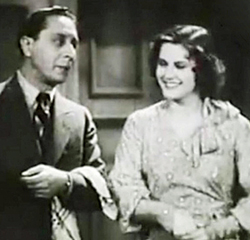 These are low budget films—not surprising with the reuse of footage—and it shows with static shots, uninspiring sets, and drab lighting. There’s little movement even in the main room, and people rarely leave it. But superior pacing beats out the lack of funds, making these enjoyable renditions. And there’s little to choose between them. Without seeing them side by side I wouldn’t be able to tell the lead actors apart. I give Kisértetek vonata the edge, partly for the lack of the early song, but more for Marika Rökk as the Cute Girl, in these versions named Mary. A star of German musicals, she’s electric: sexy, intense, and funny. She’s the only actress in all five films who stands out in the part.
These are low budget films—not surprising with the reuse of footage—and it shows with static shots, uninspiring sets, and drab lighting. There’s little movement even in the main room, and people rarely leave it. But superior pacing beats out the lack of funds, making these enjoyable renditions. And there’s little to choose between them. Without seeing them side by side I wouldn’t be able to tell the lead actors apart. I give Kisértetek vonata the edge, partly for the lack of the early song, but more for Marika Rökk as the Cute Girl, in these versions named Mary. A star of German musicals, she’s electric: sexy, intense, and funny. She’s the only actress in all five films who stands out in the part.
The Dutch De Spooktrein is more stylish than the previous versions, but then it is 1939, and there had been technological leaps in filmmaking in six years. The station doesn’t look like stage set, but feels real; it’s also spookier. Generally the filmmaking is a step up, and while De Spooktrein show’s its stage roots, the story has finally been given a true conversion for film. And again, this is a shorter film. While it cannot be called swiftly paced, at under 70 minutes, it doesn’t drag. I suspect some of the improvements can be attributed to having a more skilled director: Karel Lamac. He’d been forced out of Czechoslovakia and Germany, so found himself in the Netherlands. 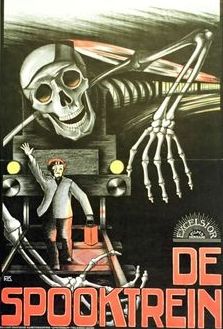 This led to the movie getting a mixed reaction in its homeland. The Dutch were feeling nationalistic (hard to blame them with the Nazi’s next door) and De Spooktrein didn’t feel like a Dutch movie to them.
This led to the movie getting a mixed reaction in its homeland. The Dutch were feeling nationalistic (hard to blame them with the Nazi’s next door) and De Spooktrein didn’t feel like a Dutch movie to them.
For the first time, there’s been a change to the characters. The Cute Girl and her Earnest Companion have become a Magician’s Assistant and an incompetent Magician. He combines the grouchiness he had in previous versions with a few of the Joker’s antics. He’s also a bit of a coward. While the Prissy Lady hasn’t changed, she has been given a more dominate role in the first section. It’s through her that we meet the other characters (she wants to change compartments to get away from smokers) and it’s the loss of her parrot that causes the train to stop instead of the Joker’s hat. Both of these changes turn out, somewhat surprisingly, to be for the good. The Earnest Man never had much of a character, and although this turns him into even more of a cliché—clearly a figure we are not supposed to like—it gives him a personality, as well as activity. And more of the Prissy Lady makes the outlandish behavior of the Joker more acceptable. She’s so unlikable that his pranks and silliness feel not only acceptable, but the sort of thing I’d like to do in the situation.
While The Ghost Train is, by nature, an ensemble piece, the Joker tends to steal the spotlight. Not so here. This is a much more balanced film. Every character gets a moment to shine, and I knew them all much better when it was done. While the ending is essentially the same, more characters are involved with what happens, which gives it the most satisfying climax, and makes it a satisfying adaptation.


1941’s The Ghost Train is the technically most sophisticated. It has some beautiful shots, with a lovely use of shadows. The camera work sells the tone. It’s also back in England with a director familiar with the property. Everything is set for this to be the best version. And wow, does it not deliver. The old problems persist, with it being too long at an hour and a half, but the failure is from a new source: radio comedy. In 1941, for reasons that elude me, Richard “Stinker” Murdoch and Arthur Askey were successful comedians. Both used a fast talking and obnoxious style, but Askey took it to another level, or I should say, took it too an older level. He’d been a music hall comedian, and he stuck with his old act. He always played the same character, with the same kind of jokes. There’s a lot of pratfalls, a lot of strange walks, and a lot of insults. He’s always very loud, always interrupting, and always talking. His routine wasn’t based on what he said, but on him always saying something. I suspect most people who would find is gags humorous have been dead for seventy years.
But it was 1941 and the studio thought there was money to be made on Askey and “Stinker” so The Ghost Train was made into a vehicle for them, though mostly Askey. The Joker role was greatly enlarged, taking over the film, and then split between the two, though Askey got the lion’s share. When the Joker was trying to hit on the Cute Girl, we now get both “Stinker” and Askey hitting on her, followed by Askey making several faces and then falling down. It’s nonstop and I don’t find a single thing Askey does amusing. I hate his character, which means now I hate the Cute Girl for being amused by him, and sympathize with the Earnest Man. Even if you like Askey (which I find inconceivable), he throws off the entire story. Nothing is frightening with him around. Nothing matters. And the other characters, including the Cute Girl, hardly exist. The Couple have been changed into a droopy pair so that they can be noticed at all. Plus, there’s a plot reason for why the Joker is acting as he does. This sticks around for “Stinker” but there’s no explanation for why Askey’s character is the way he is. He’s just an ass. And as he is more extreme, it make’s “Stinker”’s part make less sense.
This ceases to be The Ghost Train. How much you like it will have nothing to do with the story. It all depends on how much tolerance you have to Askey.
Which makes 1939’s De Spooktrein the version to see. Follow that up with Kisértetek vonata. For English-only speakers, it’s time for subtitles, or read the play first and muddle through.
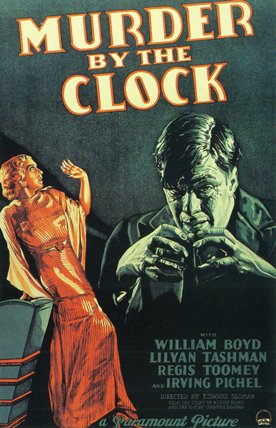


 Trenul fantomă and Kisértetek vonata can be reviewed together. Just as Hollywood used to film the same feature in multiple languages for release in different countries (for example,
Trenul fantomă and Kisértetek vonata can be reviewed together. Just as Hollywood used to film the same feature in multiple languages for release in different countries (for example,  These are low budget films—not surprising with the reuse of footage—and it shows with static shots, uninspiring sets, and drab lighting. There’s little movement even in the main room, and people rarely leave it. But superior pacing beats out the lack of funds, making these enjoyable renditions. And there’s little to choose between them. Without seeing them side by side I wouldn’t be able to tell the lead actors apart. I give Kisértetek vonata the edge, partly for the lack of the early song, but more for Marika Rökk as the Cute Girl, in these versions named Mary. A star of German musicals, she’s electric: sexy, intense, and funny. She’s the only actress in all five films who stands out in the part.
These are low budget films—not surprising with the reuse of footage—and it shows with static shots, uninspiring sets, and drab lighting. There’s little movement even in the main room, and people rarely leave it. But superior pacing beats out the lack of funds, making these enjoyable renditions. And there’s little to choose between them. Without seeing them side by side I wouldn’t be able to tell the lead actors apart. I give Kisértetek vonata the edge, partly for the lack of the early song, but more for Marika Rökk as the Cute Girl, in these versions named Mary. A star of German musicals, she’s electric: sexy, intense, and funny. She’s the only actress in all five films who stands out in the part. This led to the movie getting a mixed reaction in its homeland. The Dutch were feeling nationalistic (hard to blame them with the Nazi’s next door) and De Spooktrein didn’t feel like a Dutch movie to them.
This led to the movie getting a mixed reaction in its homeland. The Dutch were feeling nationalistic (hard to blame them with the Nazi’s next door) and De Spooktrein didn’t feel like a Dutch movie to them.


